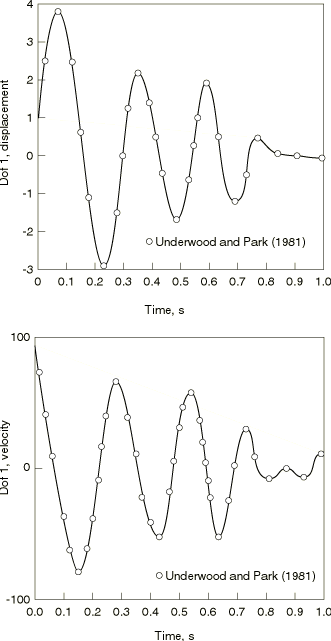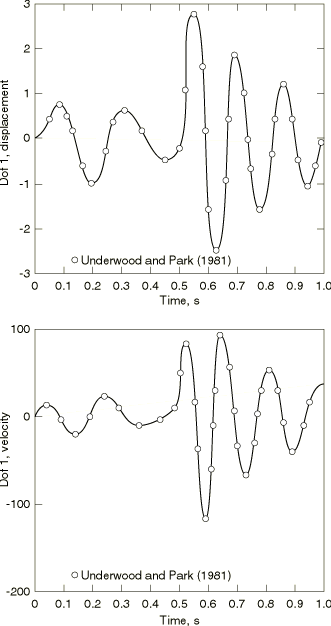Problem description
The system consists of two nonlinear springs, each connecting a mass to a fixed point, with a linear spring and a dashpot between the masses. The system is shown in Figure 1. The spring characteristics, the initial conditions, and the forcing functions are also shown in the figure. All values are assumed to be in consistent units.
For direct comparison with the solution of Underwood and Park (1981), the analysis is run with fixed time increments. In Underwood and Park (1981) a time increment of 0.0005 is shown to be very accurate with the central difference (explicit) integration operator, while a time increment of 0.03 is less accurate. In this study the time increment chosen is 0.01. This gives results that agree closely with those reported by Underwood and Park (1981).


